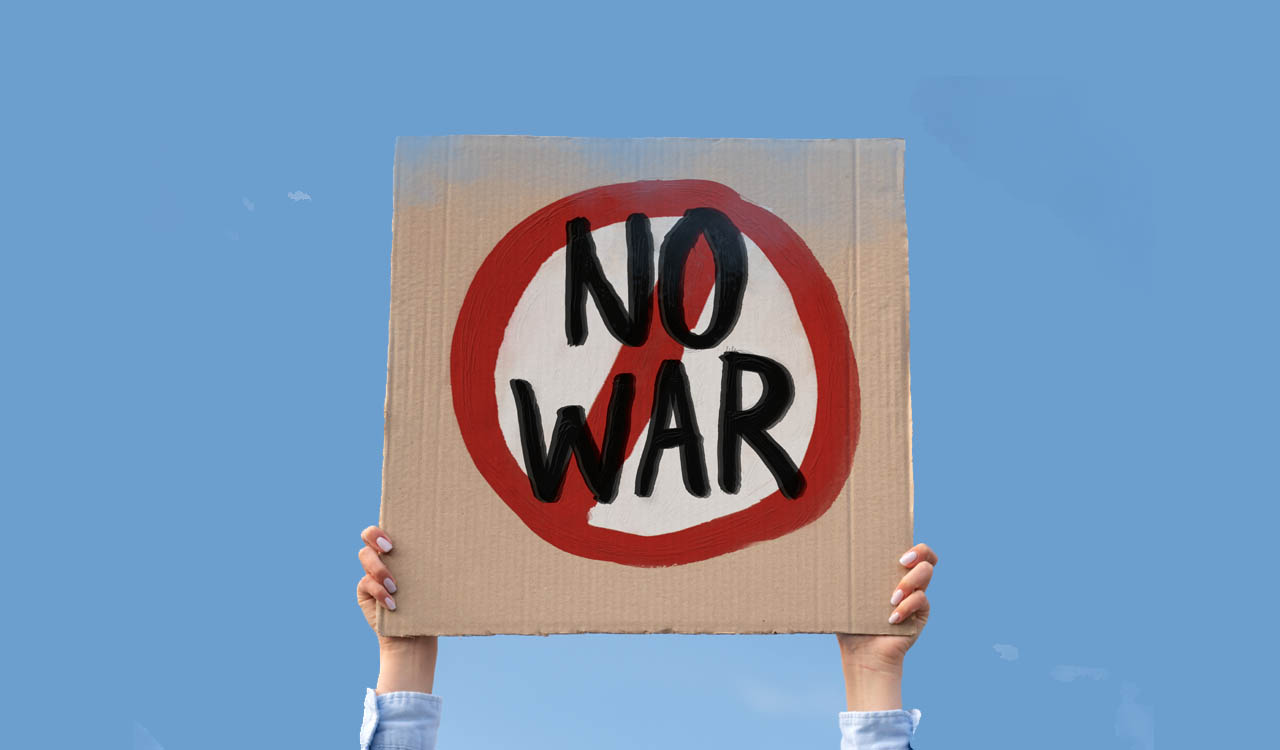By Telangana Today
By B Maria Kumar
Two developments I discovered recently reinforced my confidence about how powerfully the idea and reality of randomness, whether in human relations or in science and technology, can influence the pursuit of sustainable world peace and the prevention of wars, if managed wisely.
Reality of Randomness
The first was a video talk shared with me by my co-author of four books, R Michael Fisher, a pioneering fearologist, polymath and educator from Canada. His commentary addressed the complexities of fear in light of a statement by the US Director of National Intelligence, Tulsi Gabbard, during the ongoing Middle East war.
The second was the remarkable achievement of Eshan Chattopadhyay and David Zuckerman, who received the Gödel Prize in June 2025 for creating a mathematical tool that extracts high-quality uniform randomness from two weak and imperfect sources, contributing to the development of secure cryptographic keys and strengthening the protection of digital systems.
Fisher implied in his message that unfounded and irrational fears surrounding human existence often fuel chaos, generating greater randomness in events and unpredictable conditions across the world that raise the risk of wars and threaten global security. He meant that scaling down this social randomness could help ease anxieties and promote peace by making human interactions more stable, fearless and reliable, thus facilitating efforts to prevent wars.
On the other hand, the work of Chattopadhyay and Zuckerman focuses on enhancing randomness in cryptographic systems to ensure that security keys remain impossible for hackers to predict, thereby protecting communication networks that are vital to peace and order. Both approaches serve important but contrasting purposes.
Reducing the randomness of illogical situations in social systems fosters commensurate harmony and trust, essential for war prevention, while increasing randomness in cryptographic systems strengthens the safety of cyberinfrastructure needed to withstand attacks during armed conflicts. Although these strategies apply randomness in opposite ways, they are complementary within their respective domains.
Fears, Irrational and Genuine
The turmoil in Eastern Europe and the Middle East continues to shake international order and economic stability, and fear of an uncertain protective framework is on the rise and gradually expanding. While initial irrational fears, amplified by rhetoric or actions at the international level, fuelled the random eruption of unhealthy conditions and these wars, the destruction and suffering we have been witnessing generated genuine fears that are all too real and alarming. This reveals a tragic contradiction and highlights the urgency of developing strategies to end current wars and prevent future ones.
Reducing randomness of illogical situations in social systems fosters harmony while increasing randomness in cryptography strengthens cyber safety — both crucial to building a secure and peaceful world
Fisher and I examined this challenge in our book, ‘Hidden Dimensions of Human Existence’. When we explore the root causes, we find many factors behind the build-up of fear and how it contributes to unforeseen human behaviour and random erratic incidents that often confront one another and escalate into conflicts and wars. On account of this anomaly, the world frequently appears caught in confusion and discord.
There are contented nations alongside troubled ones. Within the same family, we see both peaceful and aggressive individuals. In one city, some groups coexist in harmony while others are locked in hostility. A major reason for this variation is the fear of fellow humans in certain scenarios, a fear that can result in violence and war at the macro level.
By nature, people tend to feel anxious about strangers. The most basic fear is the fear of a threat to survival. Yet an even more powerful source of anxiety is the fear of a threat to the sense of self, which often stems from ego and the illusion of self-importance. As a person grows from infancy, they engage with the social environment, and gradually social influences shape the ego. Instincts such as the drive for love (libido) and survival, are influenced by social consciousness.
Strike of Sibido
In this process, the life instinct takes on a psychosocial form, which can be called sibido, a fusion of two words — social and libido. As a person matures, their social world expands along with their sibido, which grows through experience, memory and exposure. Over time, this force becomes a dominant element of personality, assuming various identities connected to kinship, faith, language, race, caste, region, nationality, ideology and culture.
As these complex identities multiply across the world, interpersonal differences increase in magnitude, creating more intense social randomness and unpredictability in behaviours. While some interactions remain friendly, many are marked by undercurrents, often leading to fierce clashes and, at times, war, as sibido comes into direct conflict with universalist social consciousness.
This pattern resembles what Australian biologist Jeremy Griffith proposed in his theory explaining how mental distress arises from the struggle between instinct, shaped by natural selection, and intellect, arising from the evolutionary ability to think and reason. This enduring friction fosters aggression, self-centredness and alienation, conditions that often set the stage for collisions.
Griffith suggested that such suffering can be reduced through understanding, empathy and compassion, which promote unity and give life meaning. In a similar way, strains between sibido and social consciousness could be eased by scaling down the social randomness of toxic circumstances to positive occurrences and narrowing identity to a shared human identity, as advocated by the philosopher Ayn Rand.
Supporting alienated individuals in building warm familiarity with others can lessen xenophobic attitudes. Limiting social unpredictability through fair enforcement of reason-based ethical, moral and humanitarian laws and regulations can help reduce divisions among communities and nations.
Nurturing compassion, understanding and cooperation at all levels — personal, group and international — forms the heart of any meaningful art of war prevention. By addressing the roots of fear, identity conflict and social randomness, humanity can move closer to a future where wars no longer arise as inevitable outcomes of individual differences.
(The author, a recipient of National Rajbhasha Gaurav and De Nobili awards, is a former DGP in Madhya Pradesh)
